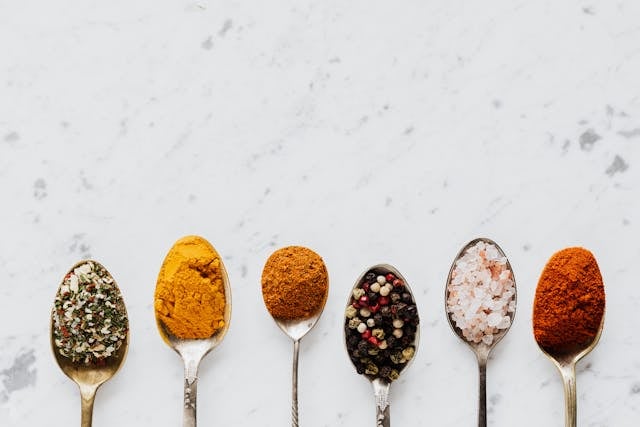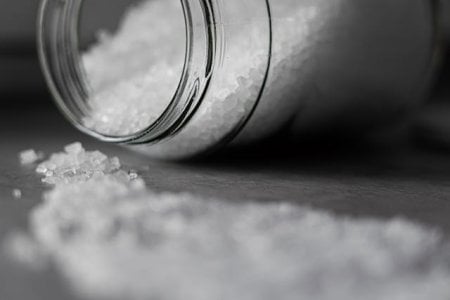
For decades, monosodium glutamate has been the pantry pariah that somehow managed to sneak into almost everything we eat.
Yet, the truth about MSG is far more nuanced than the simple 'good or bad' debate suggests—and recent research reveals some surprising twists that every home cook should know about.
A hoax that fooled the world
Let's start with one of the most successful food scares in history. Back in 1968, a letter appeared in the prestigious New England Journal of Medicine describing mysterious symptoms after eating at Chinese restaurants—coining the racist term 'Chinese Restaurant Syndrome'.
The twist? It was all a hoax. Dr Howard Steel, writing under the pseudonym 'Robert Ho Man Kwok,' later confessed he'd written the letter as a joke. By then, the damage had already been done. The reported adverse health effects of MSG have little relevance for chronic human exposure and are poorly informative, as they are based on excessive dosing that does not meet the levels commonly consumed in food products.
The hoax triggered decades of unfounded fear, devastating Chinese restaurant businesses and creating a stigma that persists today. Yet extensive studies since have consistently shown that MSG is safe for the vast majority of people at normal consumption levels.
What the latest science actually reveals
Here's where things get interesting for Australian seniors. While MSG isn't the health demon it was once portrayed as, recent research suggests the story isn't as simple as 'MSG good, fears bad'.
An extensive 2024 French study of over 108,000 adults revealed positive associations between exposure to MSG and cardiovascular disease risks, including coronary heart disease. This matters particularly for older Australians, given that heart disease remains our leading cause of death.
The key finding? Higher intakes of the food additive MSG showed increased risks of coronary heart disease. However, before you panic, remember that this study examined people who consumed it regularly over nearly eight years.
The dose makes the poison
This is crucial for understanding the safety of MSG. The World Health Organisation suggests 120mg per kilogram of body weight daily is acceptable, but European food authorities revised this down to just 30mg per kilogram daily in 2017.
For a 70kg Australian senior, that European guideline translates to about 2.1 grams daily—roughly half a teaspoon of pure MSG. Most restaurant meals contain far less, but processed foods can add up quickly.
MSG by the numbers
Natural glutamate in tomatoes: 140-180mg per 100g
Parmesan cheese: 1,200-1,680mg per 100g
Added MSG in a typical Chinese meal: 460-2,300mg
European daily limit for a 70kg adult: 2,100mg

Beyond the heart: what else researchers found
Recent studies have uncovered some unexpected connections. MSG consumption can increase the hazard of cardiovascular illness, and in addition, disrupts the intestinal microbiome and intestinal function.
This gut health angle is particularly relevant as we age, when maintaining healthy digestion becomes increasingly essential. Chronic consumption of MSG in laboratory studies has shown adverse effects on liver, brain, kidney, and reproductive organs, along with increasing prevalence of hypertension and obesity.
However, it's essential to note that many of these studies employed doses significantly higher than typical human consumption.
The umami advantage
Despite the concerns, MSG does offer legitimate advantages. It contains about one-third the sodium of regular table salt, making it potentially useful for people managing blood pressure—provided it's used in moderation.
MSG is also the crystallised form of glutamate, an amino acid that occurs naturally in foods like mushrooms, aged cheeses, tomatoes, and even breast milk. The manufacturing process involves fermenting plant materials, similar to making yoghurt—it's not some frightening laboratory creation.
Did you know?
Celebrity chef Anthony Bourdain famously defended MSG, while molecular gastronomist Heston Blumenthal calls it 'an important element of taste.' Many high-end restaurants quietly use it to enhance umami flavours.
Smart strategies for Australian home cooks
If you're curious about using MSG, here are some sensible approaches:
Start small: A pinch (about 1/4 teaspoon) can transform a stir-fry or soup
Read labels: Many processed foods already contain MSG or similar compounds
Natural alternatives: Mushroom powder, tomato paste, and aged cheeses provide natural umami
Monitor your response: Some people are genuinely sensitive, regardless of the science
What This Means For You
For most Australian seniors, occasional use of MSG in home cooking poses minimal risk. However, given the emerging cardiovascular research, it's wise to treat it as you would salt—useful in small amounts, problematic in excess. If you have existing heart conditions, discuss MSG consumption with your healthcare provider.
The bottom line for Australian seniors
MSG isn't the villain it was painted as, but it's not necessarily the hero either. Like many aspects of nutrition, the truth lies somewhere in the middle, seasoned with a generous helping of 'it depends'.
The latest research suggests moderation is key, particularly for those with heart health concerns. For occasional home use, MSG can be a helpful tool—don't expect it to be a miracle ingredient or dismiss potential risks entirely.
Most importantly, don't let fear prevent you from enjoying the cuisines you love. The amounts typically used in restaurant cooking are generally safe for most people, and the social and cultural benefits of sharing good food far outweigh minor dietary concerns.
What's your experience with MSG? Have you noticed any effects from foods containing it, or have you experimented with using it in your own cooking? Share your thoughts and any family recipes that might benefit from a touch of umami magic.







